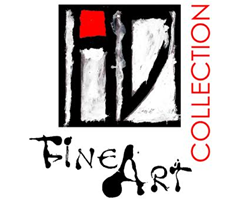Product Description
Arthur N. Colt, “The Wrestlers”, Oil on canvas c. 1938


ARTHUR N. COLT (1889-1972) USA
The Wrestlers c. 1938
Oil on canvas
Signed: A. N. Colt in lower right corner
For more information on Colt see: Who Was Who in American Art (Madison, Conn.: Sound View Press, 1985). p.125. Hove, Arthur, ed. Wisconsin Alumnus Vol. 61, No. 9 (January 1960), “Portrait Patterns” Art Digest v. 9 (December 15, 1934) p. 7
Canvas: H: 29 ½” x W: 34”
Framed: H: 38 ½” x W: 43”
Arthur Colt studied painting at the Art Institute of Chicago and in Paris. He was not only an important Wisconsin painter but also an influential teacher. He taught at the University of Wisconsin, Madison, founded a summer art colony at Black River and Devil’s Lake, WI and went on to form the Colt School of Art. Arthur Colt exhibited at the Madison Salon of Art Exhibition in 1934.
Arthur N. Colt, “The Wrestlers”, Oil on canvas c. 1938
JOSEPH RASKIN (1897-1981) USA
Seaside scene c. 1920 -1925
Oil on canvas, gold leaf frame
Signed: Jos. Raskin (lower left)
For more information see: Who Was Who in American Art,
(Madison, Conn.: Sound View Press, 1985), p. 505
Canvas: 25 1/4” x 21 1/4”
Frame: 31 1/4” x 26 3/4”
Price: $35,000
Born in Nogaisk, Russia, Joseph Raskin made a name for himself as a painter in New York City, where he was also recognized as an etcher, teacher and writer. He studied at the National Academy of Design and, in 1921, received a fellowship from the Louis Comfort Tiffany Foundation. A member of the American Artists Congress, Raskin’s work was exhibited at the Schervee Gallery (Boston) in 1927, Tricker Gallery in 1939, the Schneider-Gabriel Gallery in 1941, Steinway Hall in 1942, and the American Artists Association in 1945. Raskin’s work may be found in several museum collections including the Carnegie Institute in Pittsburgh, the Pennsylvania Academy of Fine Arts in Philadelphia, the Virginia Museum of Fine Arts in Richmond, and the Corcoran Gallery of Art and National Academy of Design, both in Washington, D.C.
OSCAR B. ERICKSON (1883 – 1970) American
Early Morning Rockport c. 1940
Oil on canvas
Marks: Original exhibition label verso: THE NORTHWEST ART LEAGUE,
INC., Oscar B. Erickson, Early Morning Rockport, oil
For brief bibliographical listing see: Who Was Who in American Art,
(Madison, Conn.: Sound View Press, 1985), p. 189.
Canvas (sight): H: 21” x W: 23”
Frame: H: 26 1/2” x W: 28 1/2”
Oscar Erickson was born in Milwaukee, Wisconsin. He studied painting and printmaking at the Milwaukee Art League and later at the Herron Art Institute of Chicago. He exhibited at the Chicago Academy of the Fine Arts, the Hoosier Salon from 1927 to 1942, the Illinois State Museum, and the Norwegian Club.
